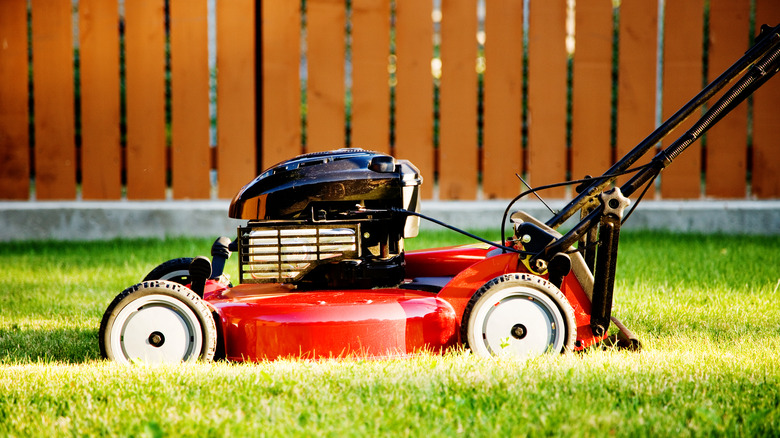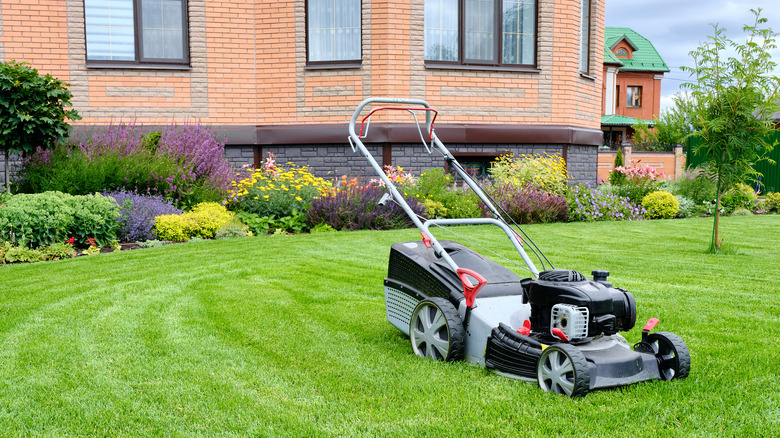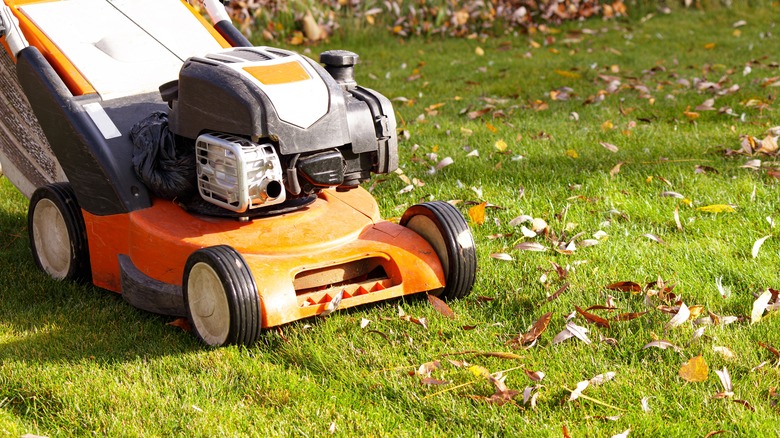
Kangah/Getty Images
By Joe Brown/
If you’re looking for easy ways to keep your yard tidy, many brands like Milwaukee and Ryobi offer tools to make yard work a breeze. Self-propelled lawn mowers are one of these innovations that can cut your time working on the lawn in half. Thanks to the automatic motor system, you only need to steer the lawn mower, the mower will propel forwards automatically.
Two of the most popular types of self-propelled lawn mower types are front-wheel drive and rear-wheel drive, but what’s the difference, and which type is best for your lawn?
Despite recent innovations like robot lawn mowers, the first self-propelled lawn mower dates back to 1922, made by the Ideal Power Lawn Mower Company and nicknamed the «Triplex.» Front-wheel and rear-wheel drive mowers utilize a belt and pulley system which transfer power from the engine to the front and back accordingly. This is unlike the very rare all-wheel drive mowers, which supply power to all four wheels.
Self-propelled lawn mowers are a must-buy for anyone with large or sloping lawns. Front-wheel and rear-wheel drive orientations each meet different requirements, however, so it’s important to pick the right drive for your lawn. Let’s look at the key differences between front and rear-wheel drive lawn mowers for a better-looking yard.
When to get a front-wheel drive lawn mower

gara pro/Shutterstock
Front-wheel drive (FWD) lawn mowers are typically the cheapest option of the two. In this design, power is supplied from the engine to the two front wheels to propel the lawn mower forward. This model is best for navigating tricky areas like in between bushes due to its precision.
By lifting the front wheels up, you can easily turn the lawn mower to mow in a new direction without stopping the drive. This is especially helpful if you need to move your lawn mower backward without disengaging the drive, making front-wheel drives a sensible choice for yards with awkward or tight spaces.
Despite their better precision, front-wheel drive lawn mowers are not suitable for sloped lawns because mowing on uneven ground can cause the front wheels to bounce. While you can lift up the front wheels and push the mower yourself, this defeats the purpose of using a self-propelled lawn mower in the first place. It’s sensible to stick with a front-wheel drive lawn mower for flat lawns only, as you’ll need better traction on difficult terrain.
When to get a rear-wheel drive lawn mower

My Ocean Production/Shutterstock
If you’re tackling a large lawn with inclines, you can rely on a rear-wheel drive (RWD) self-propelled lawn mower to do the job. This model offers better traction for slopes, so you can mow up hills effortlessly. Unlike a front-wheel drive, you won’t be faced with the issue of the front wheels lifting off the ground on uneven land, forcing you to push the mower manually. The better grip from rear-wheel drive mowers means you can effortlessly mow large areas of land with no slipping.
If you’re bagging cuttings while using a self-propelled mower, a rear-wheel drive mower will naturally offer better traction. This is because more weight is added to the back of the lawn mower, helping the rear wheels stick to the ground. The weight has the opposite effect for a front-wheel mower, which can cause the front wheels to come off the ground. You can rely on a rear-wheel drive mower for consistent traction on all lawn types, and it requires a lot less physical force to operate.
Which mower should you choose?

Sashko/Shutterstock
Self-propelled lawn mowers offer a quick and easy to get your yard looking in good shape. With simple controls and requiring little force to operate, they can help those who struggle to operate a regular push mower or have a sloped lawn. Choosing the right drive type depends on the size of your lawn, the terrain, and how much you’re willing to spend.
If you have a small, flat lawn, a front-wheel drive type is the best option. You won’t be paying more for something you don’t need, and you can take advantage of its flexible movement to mow around obstacles in your yard. However, if your lawn is uneven or sloping, you can rely on the increased traction of rear-wheel drives for effortless mowing. Real-wheel drives also often come with variable speed controls, making them ideal for larger lawns.
If you imagine yourself needing to make lots of careful, sharp turns when mowing your lawn, you can rely on the maneuverability of a front-wheel drive mower. For large, hilly areas, a rear-wheel drive mower is your best option to get the job done without hassle.
Methodology

Virrage Images/Shutterstock
In our comparison of lawn mower drive types, we’ve gathered information from trusted sources such as Popular Mechanics and outdoor equipment specialists Greenworks. Popular Mechanics have been working in home improvement since 1902, making it one of America’s oldest publications. Greenworks has been manufacturing landscaping equipment for personal and commercial use since 2002, and has received many accolades over the years for its outdoor and lawn care equipment. Both were used to determine the pros and cons of each mower type, and how they might best serve home owners.